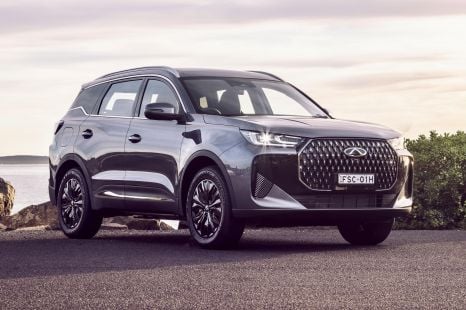

Max Davies
2025 Chery Tiggo 7 Super Hybrid review
30 Days Ago

Marketplace Editor
The sixth-generation Honda CR-V has made its Asia-Pacific debut at the Bangkok motor show this month, giving us our closest look yet at what’s to come for the Australian market – though specific launch timing is unconfirmed.
Unlike the model revealed for North America, the Thai-spec CR-V offers both five- and seven-seat interiors, though the latter is only offered in a single, petrol AWD variant. The e:HEV hybrids are five-seat only.
It appears the new CR-V won’t be produced in Japan, given it’s been discontinued there – pointing to Thailand as our source once again.
A total of five trim levels will be offered in Thailand, three petrols and two hybrids. The base petrol and e:HEV grades are front-wheel drive, while the higher grades of each respective powertrain are AWD only.
That differs slightly to what showed up on Australian government database filings earlier this month, which detail seven distinct variants – six of which are petrol, and just one e:HEV hybrid. It’s arguably the most comprehensive Honda Australia trim walk yet, given the general norm thus far has been two to four grades.

There are some discrepancies between the Thai-market range and the Australian database filing, however.
For starters, the Thai-spec CR-V e:HEV RS is AWD only, whereas the local database lists a sole e:HEV model with front-wheel drive only.
Secondly, the only CR-V grade in Thailand available with seven seats is a high-spec petrol AWD, which again contradicts what was listed on the Australian database, as petrol AWD models in Australia will only have five seats.
The outgoing, Thai-sourced CR-V range in Australia offers a range of seven variants (excluding runout special editions), which includes three petrol-powered five-seat 2WD variants, a pair of petrol-powered seven-seat 2WD models, as well as two flagship petrol AWD versions.

Honda’s current naming structure across its other nameplates leads us to believe there will be X, L and LX trim levels, and we expect the additional models from the seven-strong Australian range to come from variations of these grades, for a total of seven separate variants.
Expect the base CR-V VTi X to offer both five- and seven-seat options like the outgoing VTi, both featuring 1.5-litre turbo petrol power and front-wheel drive, joined by three petrol-powered VTi L versions – a five-seat 2WD, a five-seat AWD, and a seven-seat 2WD.
Finally, the flagship CR-V grade will be offered as a VTi LX AWD as well as an e:HEV 2WD hybrid, both solely offered with five seats only.
Supporting this theory, is the fact the Australian database filing lists two base 2WD grades on 17-inch alloys, one with five and one with seven seats; three models on 18-inch wheels, a five-seat 2WD and AWD, and a seven-seat AWD; as well as one petrol AWD and a hybrid 2WD both riding on 19-inch wheels.

All versions of the Honda CR-V in Thailand feature the Honda Sensing assistance suite as standard, including autonomous emergency braking (AEB) with pedestrian and cyclist detection, lane departure warning, lane-keep assist and Road Departure Mitigation systems, adaptive cruise control with ‘low-speed follow’, automatic high-beam, and a lead vehicle departure alert function.
Available on select variants are intelligent LED headlights with adaptive high-beam – similar to a Matrix LED unit – and a surround-view camera system. Hybrid models get a special regen adjustment system accessed via the paddle shifters, while petrol models use the paddles for shifting gears, as you’d expect.
One odd discrepancy between the Thai and North American versions is that the Thailand market continues with Honda’s LaneWatch side camera system as opposed to a more conventional blind-spot monitoring feature.
Rounding out the tech highlights are an available new head-up display, 12-speaker Bose premium audio system, 10.2-inch TFT digital instrument cluster, and a 9.0-inch touchscreen infotainment system with wireless Apple CarPlay and Android Auto.

New for the Thai market are a new RS flagship grade and the availability of an e:HEV 2.0-litre hybrid. The previous-generation CR-V Hybrid was produced at the brand’s Japanese and North American plants, but not from Thailand – where Australia sources its vehicles from.
The sporty RS gets a gloss black exterior accents for the front grille and side mirrors, body-coloured bumpers and wheel arch cladding, and 19-inch alloy wheels, in addition to black leather seats, red top-stitching throughout the cabin, brushed aluminium trim inlays, and sports pedals.
Befitting of its flagship status, the Thai-market e:HEV RS 4WD exclusively offers keyless entry via a Smart Key Card, cabin air purification, the aforementioned head-up display and Bose premium audio system, satellite navigation, as well as intelligent LED headlights with adaptive high-beam.
Being the only model in Thailand available with 19-inch wheels, expect the Australian-market VTi LX and e:HEV LX to look something like this RS.



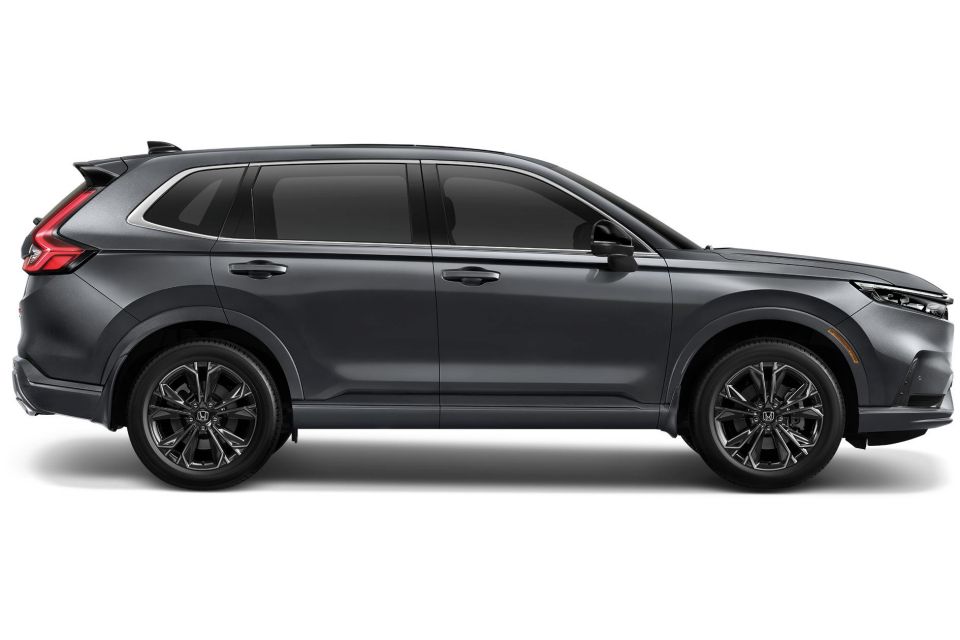
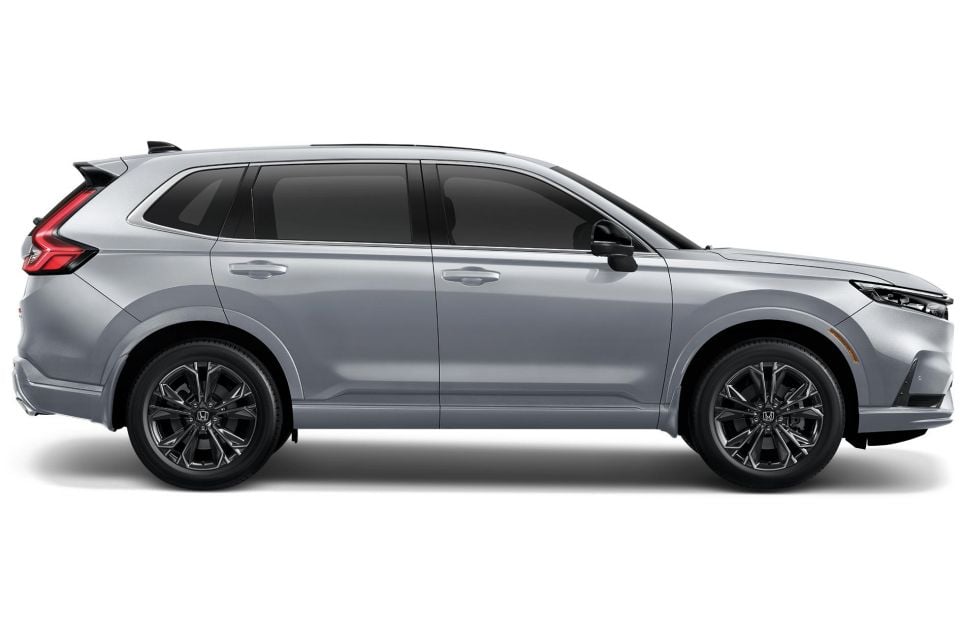
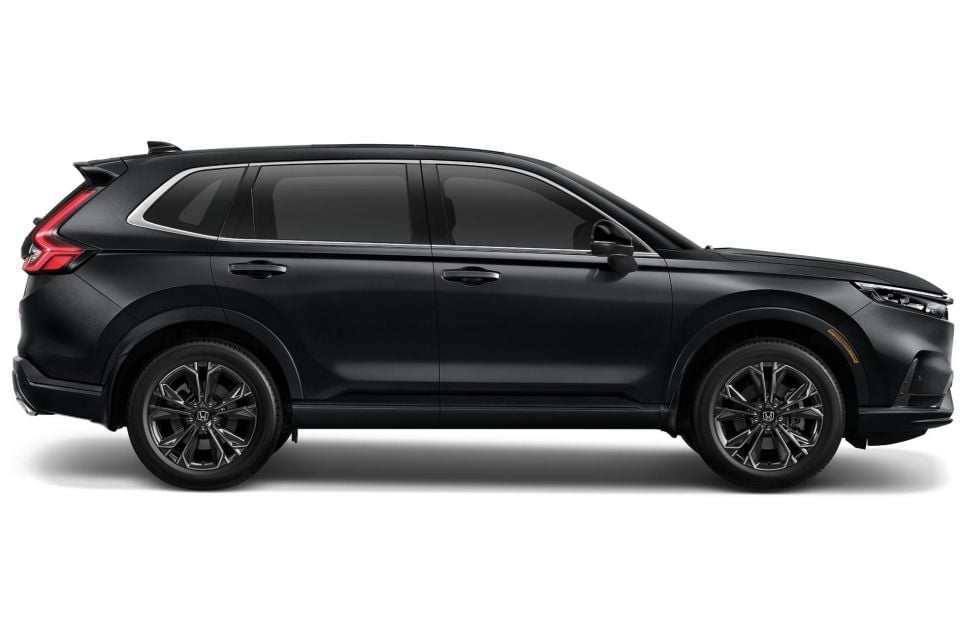
Six exterior paints are offered in Thailand: Ignite Red Metallic, Canyon River Blue Metallic, Platinum White Pearl, Grey Meteoroid Metallic, Lunar Silver Metallic and Crystal Black Pearl. Ignite Red is exclusive to the e:HEV RS, while Canyon River Blue is limited to e:HEV hybrids only.
Speaking of, the e:HEV’s 2.0-litre petrol-electric hybrid system is a first for the Thai-built CR-V, which is shared with the Civic e:HEV on sale in Australia.
The 109kW/183Nm 2.0-litre naturally-aspirated petrol engine is paired with a 135kW/335Nm electric motor, making for a system power output of 152kW. That’s a little up on the Civic e:HEV, which offers 135kW and 315Nm.
Both front- and all-wheel drive versions are available, driving through an E-CVT. Honda’s Thai website mentions a lithium-ion battery for energy storage, though doesn’t quote a capacity. For reference, the Civic e:HEV’s battery pack measures 1.05kWh.
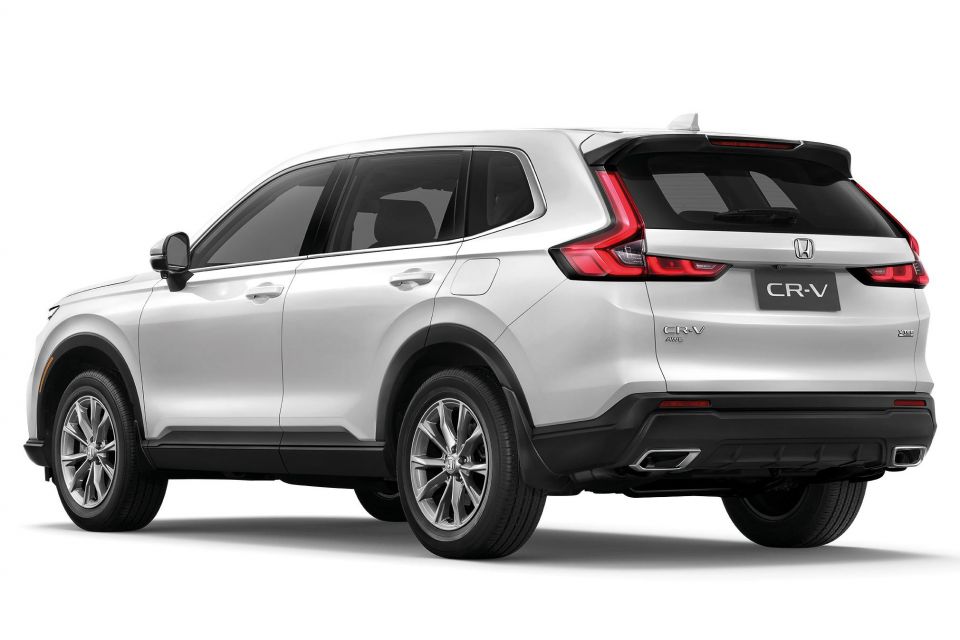
Petrol versions of the CR-V are powered by a 1.5-litre four-cylinder turbo petrol engine, which develops 140kW (6000rpm) and 240Nm (1700-5000rpm). By comparison, the Australian-market Civic VTi LX makes 131kW and 240Nm from the same engine.
Drive is sent to either the front or all four wheels via a CVT automatic.
The new CR-V is 4694mm long, 1864mm wide, 1692mm tall, and rides on a 2700mm wheelbase, meaning the sixth-generation car is 69mm longer, 10mm wider, 2mm taller, and has a 41mm longer wheelbase than the outgoing model.
That puts it at the larger end of the mid-sized SUV segment among models like the Mitsubishi Outlander and Nissan X-Trail, which also offer an available third row of seating.

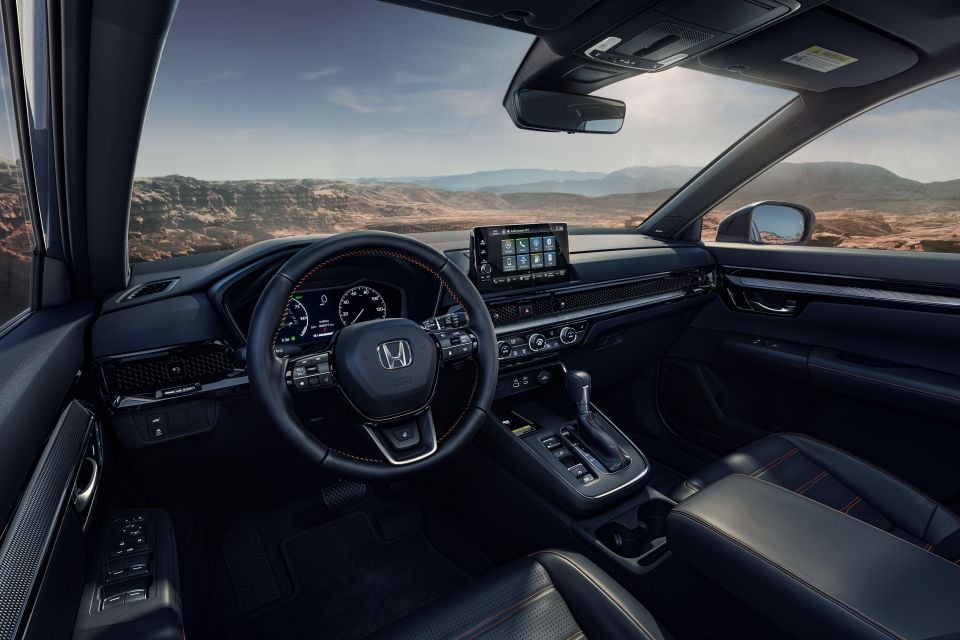

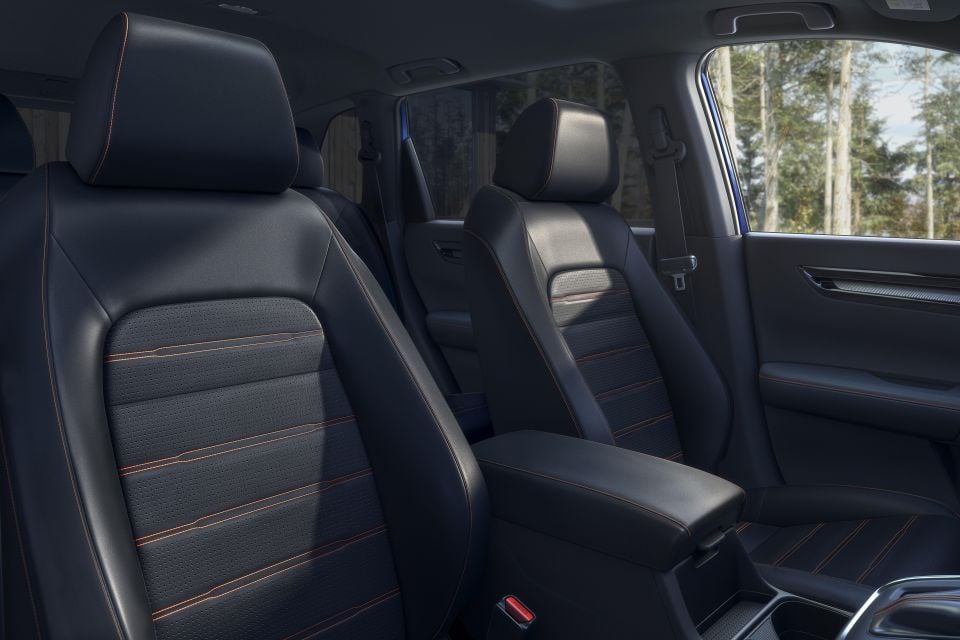
Honda Australia is still yet to confirm when we might see the new CR-V locally, though said at the North American reveal last July that the sixth-gen SUV was “at least 12 months away” at the time.
We’re expecting some form of an announcement in the coming months, given the local range was submitted to an Australian government database as mentioned earlier.
The sixth-generation Honda CR-V will complete Honda’s refreshed SUV range when it finally arrives, accompanying the new HR-V launched in 2022, and the all-new ZR-V due around mid-year.
Stay tuned to CarExpert for all the latest, and let us know your thoughts in the comments.
MORE: Everything Honda CR-V
Where expert car reviews meet expert car buying – CarExpert gives you trusted advice, personalised service and real savings on your next new car.
James is an automotive journalist based in Melbourne, Australia. Before joining CarExpert.com.au in 2020, James has worked at leading auto media outlets including Carsales and CarAdvice, as well as at Pulse agency for Ford Australia's communications team. In 2019 James made Mumbrella's 'Top 20 most prolific web authors in Australia' list after publishing 1,360 articles between March 1, 2018 and February 28, 2019 for CarAdvice. James is also an Ambassador for Drive Against Depression – an Australian charity whose mission is to support mental wellness through the freedom of driving and a shared love of cars.


Max Davies
30 Days Ago


Max Davies
17 Days Ago


William Stopford
5 Days Ago
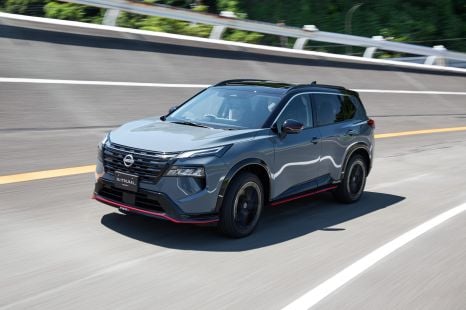

William Stopford
5 Days Ago


Andrew Maclean
5 Days Ago
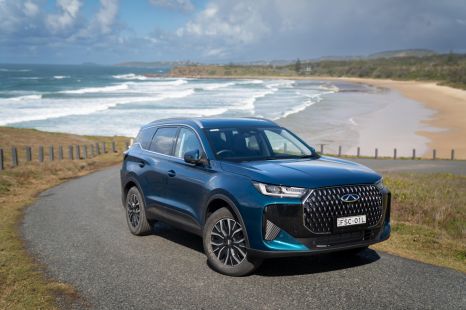

Andrew Maclean
4 Days Ago